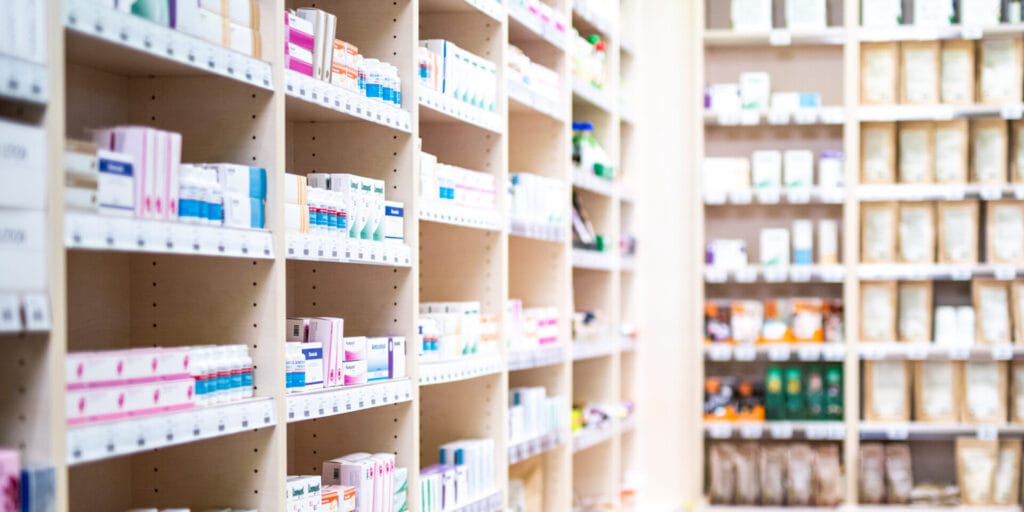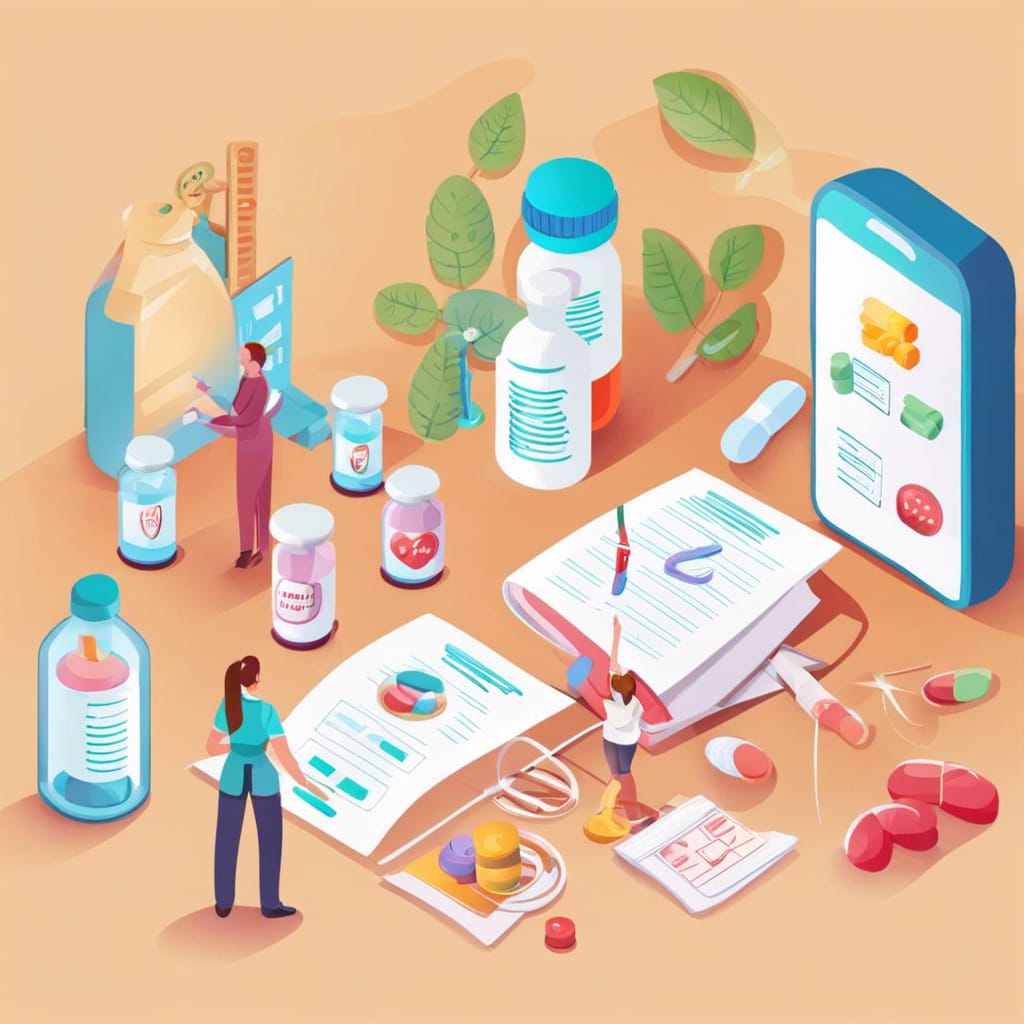Pharmaceuticals contribute 50-60% of the total out-of-pocket expenditure (OOPE) on health in India. Some medicines are almost 300% higher than others that treat the same disease. The question that bothers a daily consumer boils down to this – are pharmaceutical companies charging exorbitant amounts from consumers for medicines that consist of the same ingredients, that provide the same cure, that have the same effect on the disease and that perform in the same way?
This article answers this particular question. It describes the different types of medicines sold before the problem is established & analysed. It relies on the subjects – pharmacology and biotechnology to understand whether there is a real & significant difference between the medications produced. It also tries to see the validity in the claim – some medicines are superior to others, even though they both treat the disease similarly and have the same molecules.
In this process, we identify the anomalies in the industry that are detrimental and end the debate as to whether pharmaceutical companies are robbing consumers by charging exorbitant prices for medicines that treat diseases in the same way as those that are affordable.
Pharmaceutical Market in India & Its Biggest Problem:
Broadly, three different kinds of drugs are sold in the global markets: Patented/originator drugs, branded generics, & unbranded generic medicines.

Pharmaceutical companies, after long clinical trials and significant investment, develop molecules to treat diseases and problems. They are rewarded with patents, which give them the power to earn extraordinary revenues without any competition. Once this power expires in 20 years (under the current regime of Trade-Related Intellectual Property Rights (TRIPS), other pharmaceutical companies will gain access to the molecules and can then start producing medicines. These medicines are called generic medicines. Generic medicines that are sold under a brand name (Dolo/Cipla etc) called branded generics and those which are sold without using any brand names are called Unbranded generic medicines.
Branded generics comprise more than 87% of the drugs sold in the Indian market. Unbranded generics only make up to 10% of the sales. Several pharmaceutical companies produce multiple formulations and market them under numerous different brands. Because of this, there are more than 47,437 brands for 2871 molecular formulas. Some examples: For gastrointestinal problems, there are about 305 formulations and 5551 brands. For Anti-Infectants, there are about 290 formulations and 5349 brands. For Cardiac issues, there are about 283 formulations and 3668 brands. For vitamins, minerals and nutrients, there are about 141 formulations and 5236 brands. Lastly, for Dermatology problems, there are 281 formulations and 4227 brands.
What is problematic about this is not the numerous branded generics but the prices of these medicines. In the anti-diabetic segment, the price difference between branded and unbranded generics is about 185%. Branded generics that treat cancer cost 154% more than unbranded generics. A similar disparity in prices exists between the two that act as anti-biotics (194%), that act as vitamin and mineral supplements (186%), and those that treat cardiovascular problems (200%).
Because of the significant price variation, in the case of a life-altering disease or a situation, the patient and their family members are required to clean out their savings and, in some cases, even sell out their properties and take out loans for the sake of covering medical costs. These charges quoted by these companies can only be justified if there is a real and significant difference in the treatment outcomes and the quality of the product. If the difference is negligible or unreal, then the price that is charged is unfair and abusive of the consumer.
Suppose there is no difference in the products. In that case, the pharmaceutical companies, hospitals, private practitioners and retailers are in collusion to abuse patients when they are most vulnerable, fighting for their lives.
Whether the distinction is real – the Science behind.
The answer to the question – of whether branded generics are inherently different or not lies in the science behind the creation & approval of generic medicines. All generic medicines, whether branded or not, must satisfy certain requirements about ‘bioavailability’, ‘bioequivalence’ & ‘confidence’ before they are green-lit to act as a substitute to the once patented medicine.
Bioavailability:

Imagine two medicines that are supposed to treat the same problem, like a headache. One is the original, patented medicine, and the other is a cheaper, generic version.
If the generic medicine needs a much bigger or smaller dose than the original medicine to work, or if you need to take it differently (like a shot instead of a pill), or if it moves through your body in strange ways (it goes too fast or too slow to where it’s needed), then the generic medicine is considered to be not playing by the same rules; then it is said to be not bioavailable like the original medicine.
When medicines act so differently, they don’t really work the same way in the body. So even though they’re both supposed to help with the headache, the generic medicine might not be as good at it because it’s doing things differently than the original one.
Bioequivalence
For the generic medicine to be just as good as the original, it needs to:
- Have the same ingredients inside: Both the original and generic medicines need to have the same important ingredient (active ingredients / molecule). Even if they look different (like different color or shape) or have other different (inactive) ingredients that make them easier to create or cheaper to ship, they still need to work the same way.
- Work the same way: Both medicines should be taken in the same way, and once inside your body, they need to move around and work the same.
If the generic medicine satisfies these two conditions, then is is considered to be bioequivalent to the original medicine.
Confidence Interval:
Medicines work a little differently for each person. Some people’s bodies might take in the medicine really fast, while others absorb it slowly. Once the medicine is in the body, it might move around or leave the body differently for everyone.

To make sure that a generic medicine works just as well as the original for everyone, the medicines are tested on many people from different age groups. They check how fast the medicine gets in the body, how it moves, and how quickly it leaves. Then, they perform a “90% confidence interval,” saying that the medicine will work for almost everyone, no matter who takes it.
Because of these three requirements, no difference exists between how generic medicine is created and the original medicine. This is why all branded generics are the same as unbranded generics. Therefore, any price variation between branded and unbranded generics does not arise from science but from the business side of things, i.e., the industry’s conditions and the way the medicines are sold.
The way the Industry is rigged
In India, where illiteracy rates are still high; & where there exists information asymmetry about what medications to take for what types of problems and how they are produced and provided, doctors, more so than hospitals & chemists, are the de facto consumers of the medicines. They decide whether the medicine that works best for their patient is the ‘branded’ or the ‘unbranded’ generic medicine.
Because doctors are in this position and are required to look out for their survival & profits, they are kept in a position to strike a balance between the margins they can earn by selling the branded generic medicine and patient welfare. If all generic medicines are the same and virtually guarantee the patient welfare, the factor that affects the doctor’s decision is – which pharmaceutical company provides more margin for prescribing the branded generic medicine it has created.
Essentially, the pharmaceutical companies no longer compete to win over the consumer/patient but to gain the doctor’s loyalty. They compete to tip the scales in their favour by sharing the margin with them or the hospital they work for. And if they fail, they compete to monopolise the chemists and the pharmacy around the hospitals. Thus, promoting a particular branded generic over another artificially increases the price.
This type of “Brand” competition, where it is happening to monopolise doctors, hospitals, & chemists, has several implications on the way the choice of the consumer is affected and the costs borne by the patients.
The Effect on the Choice of the Consumer
First & foremost, because pharmaceutical companies interfere in the decision-making process, the direct effect is on the patient, as they would be receiving the generic medicine that yields more margin to hospitals/doctors/chemists instead of getting the best generic medicine that suits their physiology.
Secondly, because a pharmaceutical company is sharing the margin with hospitals, chemists, and doctors for selling the generic medicine it created, as time goes by, an increasing no. of hospitals, chemists, and doctors will likely join the margin-sharing scheme, provided they consider the margin provided/shared as a good enough incentive. This drives up an artificial demand for branded generic medicine, as it is more famous for its margin than others. The cycle continues – the more hospitals, doctors and chemists join in, the more the medicine is prescribed & vice-versa.

This circular effect (the network effect) has another drastic implication. Because more and more hospitals, chemists, and doctors enter into these types of agreements for an increasingly large no. of medications, and because pharmaceuticals need to provide money to their roaster full of hospitals, chemists, and doctors, the price of ‘branded’ generic medicines is set to always go high, way beyond the price that can be considered affordable; way beyond the price that can be regarded as fair, way above the prices that the patent holder charged.
All of this means that the overall choice of the consumer is severely affected by factors that they can’t control. However, this extraordinary & massive effect on the choice of consumer fails to compare with the damage that is caused to the patient.
The Damage Caused To The Patient:
Every hospital wall is a witness to the wailing cries of a consumer who has lost their loved one and is in unnecessary debt accrued by buying these branded generics. Their pain was amplified because they were neither powerful enough to avoid the exorbitant prices nor had unlimited time to act as rational consumers in choosing the medicine.
By feeding on the patient’s need and urgency to find the solution & their lack of awareness, the medical industry (or at least the majority of it) is pushing medicine that is unnecessarily and unfairly priced that is best in the group of medicines that yield the highest margin.
The way ‘branded’ generic medicines are used to derive revenues from suffering patients may not seem to pose a problem if the patient is facing a minor issue that has the same, un-alarming prices (Ex: Paracetamol, Dolo, Cipla for treating the common cold). But the equations change when the stakes are quite literally existential (Ex: cancer, cardiovascular problems, etc.) or when the stakes are life-altering in nature (Ex: diabetes, treatment for infants, etc.).
The damage is not restricted to the choice of the consumer. It enters the realm of life and death.
Conclusion:
The pharmaceutical industry in India is in a complex landscape where pricing disparities between branded and unbranded generics pose serious concerns for consumers. While the science of bioavailability and bioequivalence ensures that generics should perform similarly to patented drugs, the significant price differences among these drugs often appear unjustified, with the market leader being able to charge multiples on the same molecular formula. Consumer choices are heavily influenced by doctors, hospitals, and chemists who prioritise profit margins over patient welfare. As a result, patients are often funnelled into purchasing higher-priced branded generics, even when cheaper alternatives are available.
This price inflation becomes particularly devastating in the case of life-altering or life-threatening diseases, where patients are forced to make enormous financial sacrifices. The collusion between pharmaceutical companies and healthcare providers undermines the fair distribution of medications, leaving vulnerable consumers at a distinct disadvantage.
Ultimately, this creates an urgent need for regulatory intervention and better public awareness. Without checks on the influence that pharmaceutical companies wield over the medical industry, the cycle of exploitation will continue, further burdening those who can least afford it.
References:
1. Market Study on the Pharmaceutical sector in India – Key findings and observations, Competition Commission of India, 18/11/2021.
2. Donald J. Birkett, Professor, Department of Clinical Pharmacology, Flinders University and Flinders Medical Centre, Adelaide, Generics – Equal or not? Australian Prescriber Vol. 26 No. 4 2003
3. Drug Bioavailability, https://www.ncbi.nlm.nih.gov/books/NBK557852/
4. What Is a Confidence Interval and How Do You Calculate It?
https://www.investopedia.com/terms/c/confidenceinterval.asp
5. Discussing Brand Versus Generic Medications
https://www.uspharmacist.com/article/discussing-brand-versus-generic-medications
6. Similarities and Differences Between Brand Name and Generic Drugs https://www.cadth.ca/similarities-and-differences-between-brand-name-and-generic-drugs
7. Generic Drugs, Are They as Good as Brand Names?
https://www.medicinenet.com/generic_drugs_are_they_as_good_as_brand-names/views.htm
8. Generic Drug Facts, https://www.fda.gov/drugs/generic-drugs/generic-drug-facts
9. Drug Bioavailability, https://www.ncbi.nlm.nih.gov/books/NBK557852/
10. “Plasma Concentration-Time Profile” as an Indefinite Claim Term: A Lesson from Forest Labs., Inc. v. Teva Pharm. USA, Inc.
https://www.liebertpub.com/doi/10.1089/blr.2019.29116.phc
11.Similarities between brand names and generic drugs – https://www.cadth.ca/similarities-and-differences-between-brand-name-and-generic-drugs


1 Comment
8dm8mv